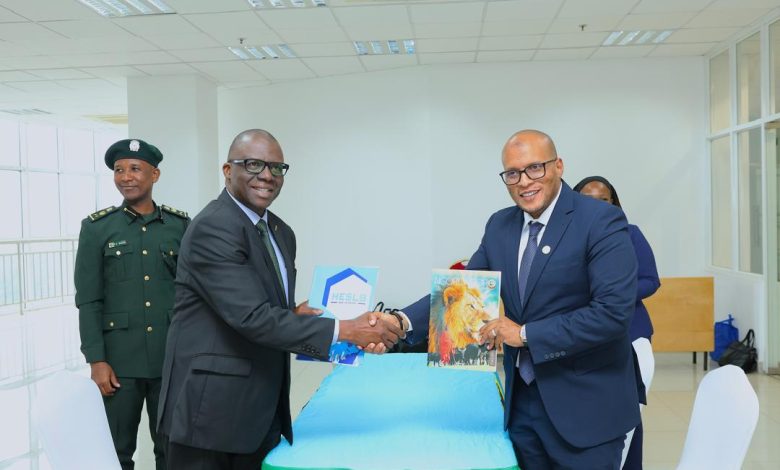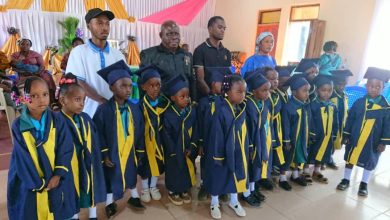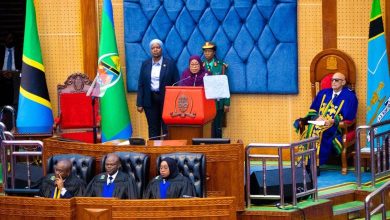HESLB, NCAA ink deal to boost Ngorongoro education access

In a bold new move, the Higher Education Students’ Loans Board (HESLB) and the Ngorongoro Conservation Area Authority (NCAA) have inked a cooperation agreement aimed at empowering communities around the NCA to apply for, receive, and repay student loans and to realise the benefits of higher education for both the individual and their community.
The objective is straightforward but ambitious: equip qualified students from neighbouring communities with access to higher education funding; raise awareness about how the loan system works; and ultimately help build a more educated, prosperous local society.
At a crisp signing ceremony over this weekend, Commissioner for Conservation at NCAA, Abdul‑Razaq Badru, spelled it out: this is “for students from communities surrounding the Ngorongoro Conservation Area”. He added that the first batch will be 50 students admitted into special fields: Astronomy, Heritage and Archaeology, Wildlife Conservation.
Elaborating, HESLB Executive Director Dr Bill Kiwia described the mechanism: “HESLB will receive the funds from NCAA, administer and supervise the loan (and grant) disbursement, and ensure everything runs according to HESLB policy, NCAA guidelines, and a jointly-agreed framework. HESLB will also carry out tailored outreach campaigns including brochures, guidelines, awareness-raising in the local languages and cultural context.”
Here, Chairpersons on both sides added their voices. On the NCAA side, Board Chairman General (rtd) Venance Mabeyo noted that rising tourism revenue made this possible. On the HESLB side, Board Chair Prof Hamisi Dihenga praised the initiative and called for other institutions to follow suit to deepen funding sources for higher education and broaden access.
Through this partnership, HESLB aims to make sure young people in the Ngorongoro area get equal opportunity for university or diploma study, contributing to “an educated, prosperous and sustainably developed society.”
Here’s the nuts-and-bolts of how HESLB and NCAA plan to implement the deal: NCAA will allocate funding (or facilitate funding) for scholarship/loan support for students from communities around the NCA.
HESLB will receive and administer the funds: it will manage the process of loan (or grant) offers, disbursements, and monitoring.
The loans/grants will target students admitted into recognised higher-education programmes (degree or diploma) and from the defined communities.
HESLB will also roll out an outreach campaign: community education about the application process, loan terms, repayment obligations, and benefits not just for the student but for the community at large. These materials will be culturally and linguistically appropriate for the region.
There will be a joint framework: HESLB policy and NCAA guidelines and a specific memorandum of understanding outlining roles/responsibilities.
Also important: monitoring and evaluation that is how many apply, how many access the funds, how many complete; how the loan/grant usage translates into outcomes locally.
Tips to watch: While 50 students are the start, the broader sustainability depends on scaling, appropriate recoveries (for loan portions), and ensuring the students actually come from the targeted communities. Also, combining tourism-derived funds with higher education makes sense but transparency and community-involvement will matter.
For communities: Access to higher-education funding means more graduates, more professionals who understand both local culture and global skills. Imagine the son of a Maasai herder becoming an archaeologist studying Laetoli footprints.
For the region: A virtuous cycle of tourists paying fees and the conservation authority collects revenue that is part of that revenue supports students to those students return (or contribute) and to the community development that strengthens tourism remains vibrant because the region is stable, educated, engaged.
For institutions: HESLB gets access to a new demographic previously under-reached; NCAA shows that conservation can link directly to education, not just wildlife viewing.
The challenges
Loan recovery remains a concern for HESLB. Past reports show low repayment rates and increasing dependence on government funding. If too many default, the whole fund gets stressed.
Scaling is key. Starting with 50 students is fine, but to meaningfully change the region you will need hundreds or thousands.
Ensuring the funds reach the right students: those from the communities next to the NCA, who have academic merit and genuine financial need. Avoiding leakages.
Cultural, geographic and linguistic outreach efforts must be strong. The communities may be remote, practices are traditional (e.g., pastoralism) and awareness may be low. It is not enough to say “apply online”, you will need in-person sensitisation, local languages, trust-building.
Transparency and community buy-in: For the programme to work and be viewed as legitimate by local residents, it must show real, visible results not just “here’s some students” but “here’s how that changed things locally”.
Linkage to outcomes: Graduates must be supported to utilise their education locally (jobs, entrepreneurship) otherwise the whole cycle gets weak.
Why this could be a model
This partnership has the makings of a replicable model: a tourism/conservation agency with rising revenues invests in local human capital via an educational-loan board. If it works, it could be cited across Tanzania (and perhaps other countries) as an example of “conservation plus education and translate into community development”.
Already the HESLB Board Chair noted that other institutions should emulate the initiative. And given that the tourism/conservation sector in Tanzania is expected to aim for 8 million tourists by 2030, the potential funding sources are sizeable.
In short: Not just “students get loans” but “the region, thanks to tourism and conservation, invests in its future through its youth”.
What to watch next
How the first cohort of 50 students progresses: Are they from the target communities? What programmes are they admitted into? How are the loans/grants structured?
Reporting on how many apply and how many are selected: The outreach campaign’s effectiveness will show up in applicant numbers and diversity of applicants.
Tracking outcomes: graduation rates, post-graduation employment or contribution to the region, implications for community development.

Transparency and fund flow reporting: clarity about how much money NCAA channels to HESLB, how it’s monitored, and how the system ensures fairness.
Whether other institutions copy the model: degree colleges, vocational training agencies, other conservation areas.
Loan-repayment performance for this subset of students: will being from a remote community affect the repayment rate? Will there be mentoring or job-linkage support?
Community sentiment: how local residents around the NCA perceive the initiative—do they feel included, or side-lined? Are outreach materials hitting the mark culturally?
As wild beasts roam the crater floor of Ngorongoro, and tourists snap photos of zebra crossings and flamingo lakes, a quieter revolution is taking place: the world of academia beckons the young people of the region. With boots on the ground, laptops in hand, and loan-applications in process, the next generation may be less about tracking buffalo and more about tracking data, archaeology finds and conservation careers.
The deal between HESLB and NCAA isn’t just a handshake it is a bridge between tourism revenue and higher education access; between remote pastoral villages and university halls; between conservation of wildlife and conservation of human potential. The first 50 scholars are just the start of what might become a much-broader movement.
If it works, this could indeed become a model for “tourism-informs-tuition” programmes across Africa. And who knows? In a few years we might see graduates from the crater rim returning as heritage archaeologists, wildlife-conservation officers, or astronomy researchers gazing at African skies.
One thing is certain: in the valley where millions of wildebeest once thundered, students may now thunder through lecture halls. Safari, meet scholarship. And the crater’s echo may soon carry stories of degrees not just of lions.





